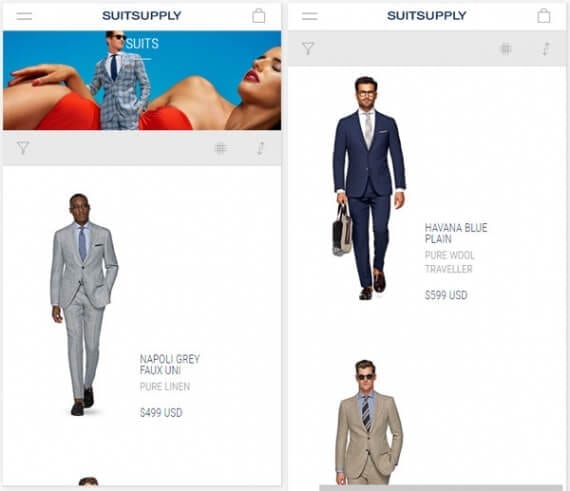
Mobile commerce represents a growing share of the ecommerce market. Many retailers can do more to increase mobile commerce conversions.
Mobile commerce sales accounted for about 29 percent of all ecommerce sales in 2015, according to published reports. In spite of this, many online retailers have yet to master the art and science of mobile commerce conversion.
Online retailers try a number of campaigns and tactics to improve mobile commerce conversion rates, but few things will be more productive than boosting page load times, providing a better mobile checkout experience, including continuous scrolling on product category pages, featuring product videos on product detail pages, and marketing specifically to mobile shoppers.
Fast Loading Ecommerce Websites
Mobile shoppers are impatient. They want to make a purchase. They do not want to wait for your slow ecommerce site to load.
According to Kissmetrics, the typical mobile Internet user will wait, perhaps, 6-to-10 seconds for a page to load. And a one-second decrease in page load time will result in about a seven-percent increase in conversion.
Page load times also impact mobile cart abandonment. When a checkout page takes just 4 seconds to load, the cart abandonment rate reaches 25 percent, again according to Kissmetrics.

When checkout page load times reach 4 seconds, online retailers might expect a 25 percent cart abandonment rate, according to Kissmetrics.
If you want to improve your mobile commerce conversions, work until your pages load in less than four seconds, and try to have pages load almost instantly.
Better Mobile Checkout
Mobile commerce checkout is, perhaps, the single greatest obstacle for selling online to mobile shoppers. A clunky form that makes it difficult for a shopper to enter payment information can be a sale killer.
“Mobile checkouts are generally really poor,” wrote Jamie Appleseed, in a December 2015 Baymard Institute post detailing many of the specific problems with completing an ecommerce order on a phone or tablet. Mobile checkout “is an evil mix of the wide range of checkout usability issues that are universally applicable regardless of device, blended with the unique constraints of the mobile platform.”
In a perfect checkout, the customer would not have to enter payment information, but rather could retrieve that information from a mobile wallet or similar. Short of this, mobile checkout should be very simple, fast loading, and easy to complete with a phone’s keyboard.
Many ecommerce themes, and many of ecommerce’s largest stores get this wrong, so to improve your business’ mobile commerce conversions, you will need to test and refine checkout until it is both easy and obvious.
Include Continuous Scrolling on Category Pages
Continuous or infinite scrolling is a design pattern that allows a user to view all of the items within some category on a single web page without, necessarily, loading all of the content at once. Additional content is added as the user scrolls further down the page.
This is the default user interface for sites like Pinterest or Twitter. You can keep scrolling down until there are no more pins or tweets.

Suit Supply is a example of an online retailer using continuous scrolling on its product category pages. The experience is significantly better for mobile shoppers.
This design pattern is helpful for mobile users since it can often result in a better shopping experience. Shoppers scroll down rather than wait for page after page to load. Consider employing continuous scrolling on product category pages so that mobile shoppers can quickly swipe through all of the offerings in a category without having to reload pages.
Mobile-friendly Video
In the fourth quarter of 2015, nearly half of all digital video downloads came from mobile devices, according to a report from Ooyala. The point is simple: Mobile Internet users watch video.
Videos have also been shown to increase retail sales conversions. Kissmetrics, as an example, reported that shoppers visiting housewares retailer StacksAndStacks were 144 percent more likely to purchase after seeing a product-related video.
If adding product videos to your site boosted mobile commerce just a couple of percentage points, it could be a big win for your bottom line.
Increase Mobile Marketing
Last year, Business Insider reported that “mobile is growing faster than all other digital advertising formats in the U.S.” If Business Insider is correct, it could be the case that your competitors have already learned an important lesson. If you want to attract mobile customers, you need mobile ads.
To spur your store’s mobile commerce growth, invest in mobile-related marketing. Start with your own email campaigns and ensure, for example, that the emails you send load properly on mobile devices.
Next look for mobile advertising opportunities, including banner advertising, native ads, and mobile video ads.




